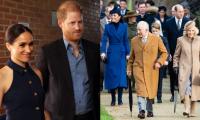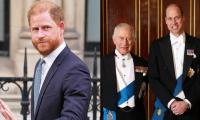Moving beyond idea, beyond type, beyond cardboard cuts, was always going to be a central feature of the Democratic National Convention in 2016. With a US presidential election set to run between two largely unpopular characters, Hillary Clinton needed to show that she was a touch more than merely the tried and the failed.
To a large degree, the convention watchers felt that the task had been achieved, though that takes a good deal of presumption and make believe. The brush of humanity had been run over the candidate, and she was there, glowing away for the task at hand.
To this could be added another act of fundamental deception. The Democratic Convention was also advertising itself as a broad church of acceptable differences, one where a range of factions and politics had come together under a fusing, non-crooked maternal gaze.
The cameos came thick and fast. There was the attempt by the running mate, Tim Caine, to show how sympathetic the Clintons, and the campaign, are to Hispanics. (I speak Spanish, so I feel how they feel.) Michelle Obama’s speech, in an attempt to promote Clinton, ended up being a pitch that looked somewhat presidential.
Then there was husband Bill, whose account was as all his accounts have been: clipped, adjusted and moderated for the audience at hand. His attempt at recalling the love story from the time they met at the law library had its notable omissions, a point made even nastier by the fact that he committed a war crime, effectively, to distract a leering US public from his infidelity.
This effort was particularly greasy in its evocation of the fiddler and fondler, the man who saw that girl, whom he wanted. “In the spring of 1971, I met a girl.” Even as elder establishment, there was a sense he would creep up and so something distinctly seedy, though vocalised as folksy and reassuring, a grooming voice.
The challenge put to delegates and to the audience was whether the image of Hillary generated by the GOP Convention was plausible, and how well it sold. “What’s the difference in what I told you and what they said? One is real and the other is made up… you just have to decide which is which, my fellow Americans.” With the Clintons, fabrication and reality are not indistinct.
The machine of an old mainstream party did eventually find its natural political rhythm. But that is largely the problem for the Democrats and the manager that are running it. An echo chamber has crept up around the politics of the United States, a chamber fed by the language of strategy, false presumption and disenfranchisement. The pollster, the focus group, and the policy wonk come first.
Nothing in the pulverising nature of the Trump train resembles that chamber. If there is a rule of engagement, break it. If a convention exists, run it into oblivion. Flirt with treason if need be, because the world of business knows no treason, only numbers and profit.
To the White House goes not so much the best brand, but the best sold one. The entire DNC show was a desperate attempt to retain a legacy and restrain others, while selling a broken product. The aim from the start was clear, a step to attain the prize that has become a symptom of modern American politics: the dynasty president. Trump truly has a mine to work with.
This article has been excerpted from: ‘Humanising Hillary Clinton: The Democratic
National Convention’.
Courtesy: Counterpunch.org
Sialkot’s products meet stringent international quality standards, ensuring reliability and safety in medical...
Once country with over 20,000 polio cases annually, Pakistan has made historic progress in curbing disease
In crowd of rightest and centrist politicians, Babar stands out as left-leaning activist and public intellectual
Tributes have flowed from highest in land to ordinary if you were to encounter them on street
On April 2, India tabled bill in Lok Sabha, proposing sweeping changes to management of Waqf properties
Trump had even imposed tariffs on uninhabited Heard and McDonald Islands near Antarctica







